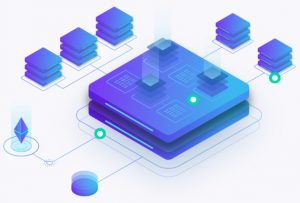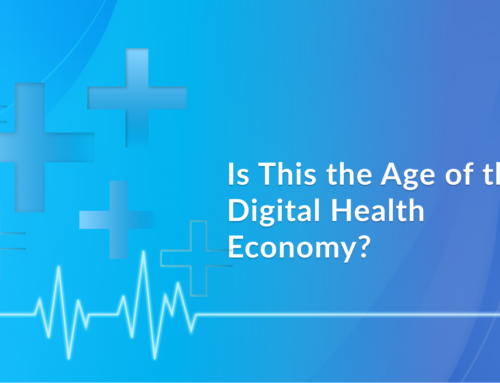Today, blockchain is one of the most in-demand technologies in the software industry. It has become increasingly important for people of all ages to be aware of blockchain and to understand what it is exactly.
Blockchains are immutable (unchangeable) digital ledgers that store records or transactions in multiple places on a network of computers. Each verified transaction is added to a space called a block, which is linked to other subsequent blocks via cryptography, forming a chain.
The blockchain is a system of recording information in such a way that it becomes difficult or impossible to change, hack, or cheat. A blockchain is a digital log of transactions that is duplicated and distributed across the blockchain’s network of computer systems.
Blockchain technology is one of the rapidly emerging technologies in today’s age of industrialization.

By design, blockchains are secure databases. Satoshi Nakamoto first proposed the concept in 2008, and it was first implemented in 2009 as part of the digital bitcoin currency; the blockchain acts as a public log for all bitcoin transactions. Bitcoin was one of the first blockchain technologies to get widespread attention in today’s globe. As a result, an increasing number of businesses are investing in the development of a successful centralized network.
The more nodes or people join the network, the slower it will be! However, the way blockchain technology works are evolving. Scalability options are being integrated with the blockchain network as technology evolves.
The distributed timestamping server and peer-to-peer network provide security to a blockchain system, resulting in a database that is users controlled and decentralized. This makes blockchains ideal for logging events (such as medical data), transacting, managing identities, and verifying provenance. It essentially offers the possibility of widespread commerce and transaction processing disintermediation.
How does it work?
The blockchain concept was first introduced as a research project in 1991, and it was used before Bitcoin in 2009. The creation of cryptocurrencies, decentralized finance (DeFi) applications, non-fungible tokens (NFTs), and smart contracts has skyrocketed the use of blockchains in the years thereafter.
Blockchain consists of a digital ledger that records and distributes information but doesn’t edit it. In this sense, a blockchain serves as the basis for immutable ledgers, or records of transactions that cannot be altered, deleted, or destroyed. Because of this, blockchains are often called distributed ledger technologies (DLT).
Blockchain has been called the “internet of value” by some, which users believe is a reasonable metaphor. On the internet, one can publish content, and anyone can view it. One with access to a blockchain file can share value with someone else in the world. To edit only the blocks your “own,” you’ll need a private, cryptographically generated key.
By combining your private key with someone else’s public key, you can transfer the value of whatever is stored in the block.
To use bitcoin as an example, keys are utilized to move blocks that contain monetary currency units. This eliminates the need for banks to perform the procedure of registering the transfer.
Because no one can alter a blockchain without the associated keys, it also serves as a means of establishing trust and identity. Edits that are not validated by such keys are rejected by the network. Of course, the keys, like physical currency, may theoretically be stolen, but a few lines of computer code can normally be kept secure for a small amount of money. (Unlike the cost of keeping a gold cache at a metaphorical Fort Knox, for example.)

Merits and Demerits of Blockchain technology
The technology behind digital assets is blockchain. It is an indestructible ledger that records economic transactions and can be designed to keep track of financial transactions as well as anything else of value.
It is a decentralized ledger with no central authority or financial institution. No technology is perfect or faultless, and Blockchain is no exception. Let’s have a look at some of the advantages and disadvantages of blockchain technology.
Merits
- Public ledger – Every transaction is made public because this is an open-source ledger. Miners keep a watch on all transactions to ensure that the blockchain’s integrity is maintained.
- No third-party control — Cryptocurrencies based on blockchain technology is not controlled by any government or financial organizations. This means that no government can control the currency’s value.
- Secure transactions — The blockchain, which records all transactions, cannot be changed or tampered with. Both parties and the general public can view the transaction data at any time. This strengthens the security of online transactions.
- Efficient cross-border transactions — Consider a financial transaction by individuals residing in different countries. Such a transaction, with traditional methods, might even take a week. With blockchain technology, such cross-border transactions can be finished in a few minutes.
Demerits
Blockchain technology, like a crypto asset, has two sides. Here are some of the drawbacks.
- Difficulties with Updating and Error Elimination — If any component of the P2P network’s nodes refuses to accept the changes, the program must be upgraded or forked.
- Dedicated Purpose Network Robustness — All applications are supported by business logic. The rationale specifies how new applications must perform in terms of business requirements. The inflexible logic of blockchain precludes it from being reinvented without sacrificing benefits, demanding sensible business changes to make the blockchain solution acceptable.
- Development Difficulties — It’s critical to use sophisticated protocols from the start to gain consensus and enable scaling. It is impossible to swiftly execute a concept in the hopes of later adding new features and expanding the application without redeploying the network or forking.
Third-party APIs are rarely used to store and access data in applications. Other Dapps should not be used by the decentralized app. This may sound fine in theory, but it creates problems in practice.
- Crime — Because there is no central authority to ensure a user’s identification, the development of certain decentralized apps becomes a severe problem. Moreover, the blockchain tech provides anonymity to users, which criminals can use to conduct illegal activities.
- Needs tech understanding — Most people believe that blockchain technology is only for tech-skilled people. To make a transaction, store crypto, trade it, and so much more, you must be knowledgeable with technology.
- Human Error — Because blockchain technology cannot be changed or amended, every data on it must be completely accurate. It’s nearly impossible to gain access to the blockchain network if you lose your Private Key.

Most common use cases of Blockchain technology
You’ve all been accustomed to exchanging information over a decentralized online platform: the internet. However, when it comes to transferring value – such as money, ownership rights, intellectual property, and so on – you are often obliged to rely on antiquated, centralized institutions or enterprises such as banks or government agencies. Even payment systems that have sprouted up since the internet’s inception – PayPal being the most apparent example – require interaction with a bank account or credit card to be useful.
The exciting option of eliminating this “middleman” is offered by blockchain technology. This is accomplished by performing three key tasks historically performed by the financial services sector: recording transactions, establishing identity, and establishing contracts.
This has major ramifications because the financial services business is the world’s largest by market capitalization. Several benefits could be derived from the application of blockchain technologies to financial services. Decentralized finance, or DeFi, has emerged due to the application of blockchain technology to financial services. DeFi is a type of finance based on blockchain technology that uses smart contracts to eliminate middlemen from financial transactions.
Establishing contracts, the third activity, brings up a world of possibilities. Blockchain can be used to store any type of digital information, including computer code, aside from a unit of value.

Conclusion
Companies are increasingly focusing on how to use blockchains to create new revenue streams. Blockchain is finally making a name for itself, with several practical applications for the technology being implemented and researched. As a buzzword on every investor’s lips, blockchain aims to make business and government operations more precise, efficient, secure, and cost-effective by eliminating middlemen.
With the demand for blockchain tech rising, and the whole ecosystem’s willingness to adopt it, this is the best time for companies to ride on the ongoing wave. Companies should start exploring this technology and see how it can improve their business. This will ensure they don’t lose their relevance in the market and scale their business easily.






Leave A Comment